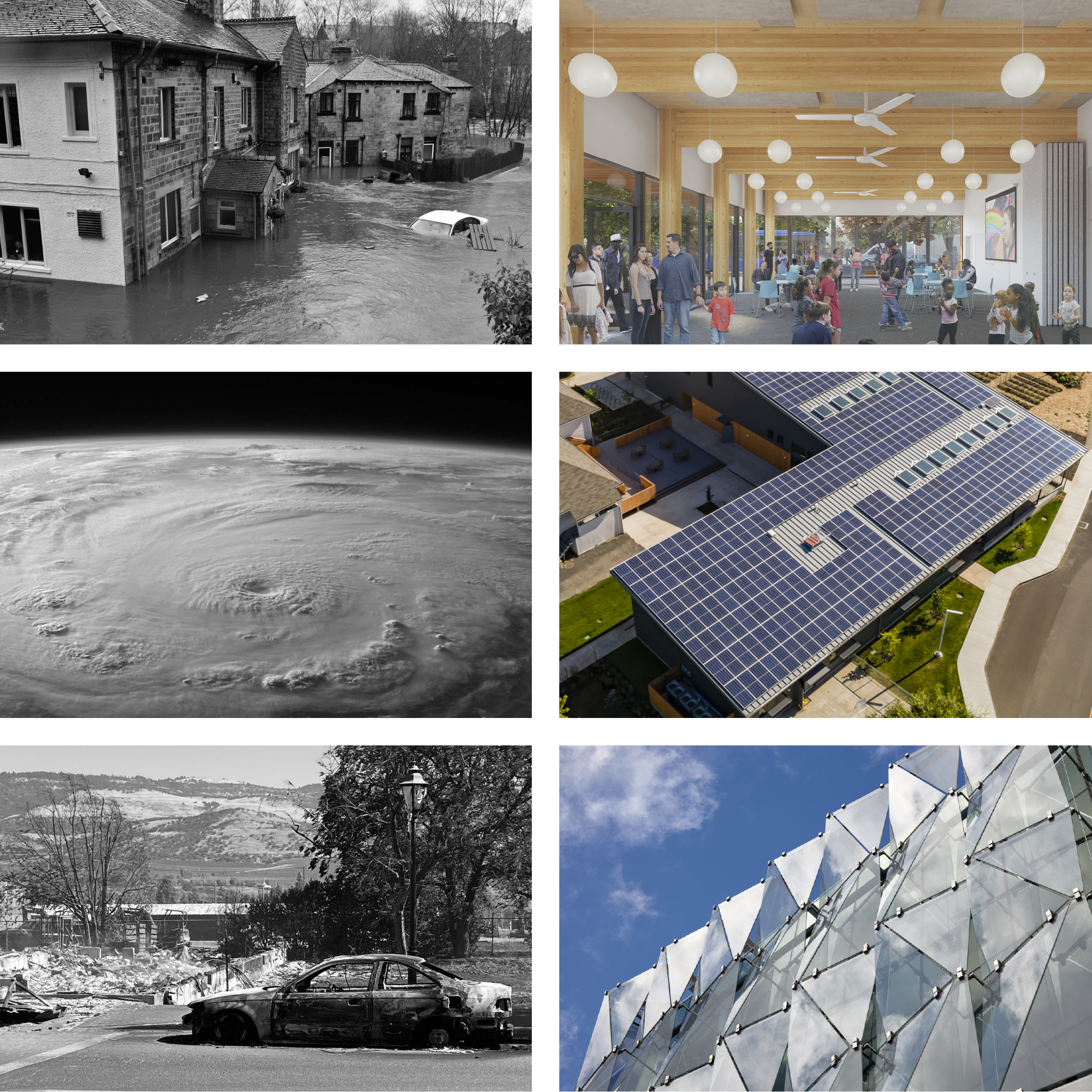


10.22.21
We’re not going back to normal. That’s the major takeaway from the most recent report by the UN’s Intergovernmental Panel on Climate Change (IPCC). The change in weather and climate that we’re experiencing today and will continue to experience over the next thirty years is the result of carbon that has already been emitted into the atmosphere. While carbon reduction remains as important as ever, reductions that we achieve today will only serve to prevent future additional warming during the second half of the century. From this point forward, each subsequent year will be further and further from the historic norm, and rather than adapting to a new stasis, the normal of the future will be one of perpetual change.
The conversation around climate change is more relevant than ever since global trends are now impacting our individual lives. Over the past year, I got to personally experience a historic ice storm in Texas and a historic heatwave in Oregon. In both locations, the building stock was woefully unprepared and in both cases, the failure of buildings had tragic consequences.
It’s clear that the buildings we design today will exist in a world that we have never experienced, but luckily, not one that we’re unable to imagine. As architects, we know how to mitigate the risks of extreme temperatures, storms, droughts, and floods, and whatever else the climate will throw at us. Architects would be prudent to design for the future and it’s clear that our clients are already expecting this level of foresight.
During Portland’s Sustainable Building Week, I had the privilege of moderating a conversation on this topic between three sustainability directors from diverse industries who are deeply focused on the present and long-term performance of buildings. Stacy Smedley, Director of Sustainability at Skanska Construction; Renee Loveland, Director of ESG at The Green Cities Company; and Dr. Missy Nergard, Director of Sustainability at University of Wisconsin at Madison shared their views on the challenges we face and opportunities for addressing both the present and future impacts of climate change.
The biggest takeaway for me is the extent to which the three panelists see carbon reduction and climate mitigation as essential and wise business decisions. All three represent organizations that build, own, or invest in buildings. All three work with architects to create projects that are efficient, durable, and resilient because these are the characteristics that support the mission and bottom line of their respective organizations.
The lesson to architects is that we need to be on top of this trend. From the performative of our client’s interests, climate and economics are now one-in-the-same, rather than tradeoffs or opposing forces. If we’re not coming to our clients with detailed plans about how their building will thrive in the era of climate change, then we’re living in 2019, a year which from a climate standpoint, is no longer relevant.
The conversation goes into these topics in-depth and the expertise of the panelists is invaluable to anyone who wants to understand the economic opportunities of sustainable design.
Session Abstract: Needs of the Future / Needs of the Present
Meeting the needs of the present without comprising the ability of future generations to meet their own needs is how the UN defined sustainability in 1987. This interpretation is inherently altruistic, cautioning us that our actions might negatively impact others, maybe far off in the future. Shift forward just a single generation and the length of time between cause and effect has significantly contracted. It’s now clear that our choices and actions are not impacting others, but ourselves. According to the recent IPCC report, the next thirty years of climate change are baked into the atmosphere and will require ongoing mitigation and adaptation. Simultaneously, our actions today will determine the climate of the second half of the 21st century. The report makes clear that climate action is no longer an act of altruism, but of practical self-interest. How do we address the tangible impacts of climate change today, while simultaneously working to reverse these trends for our children and future selves? Comprised of four sustainability professionals representing a range of industries and institutions, the panel will address this timely question and propose frameworks for meeting the needs of both the future and the present.